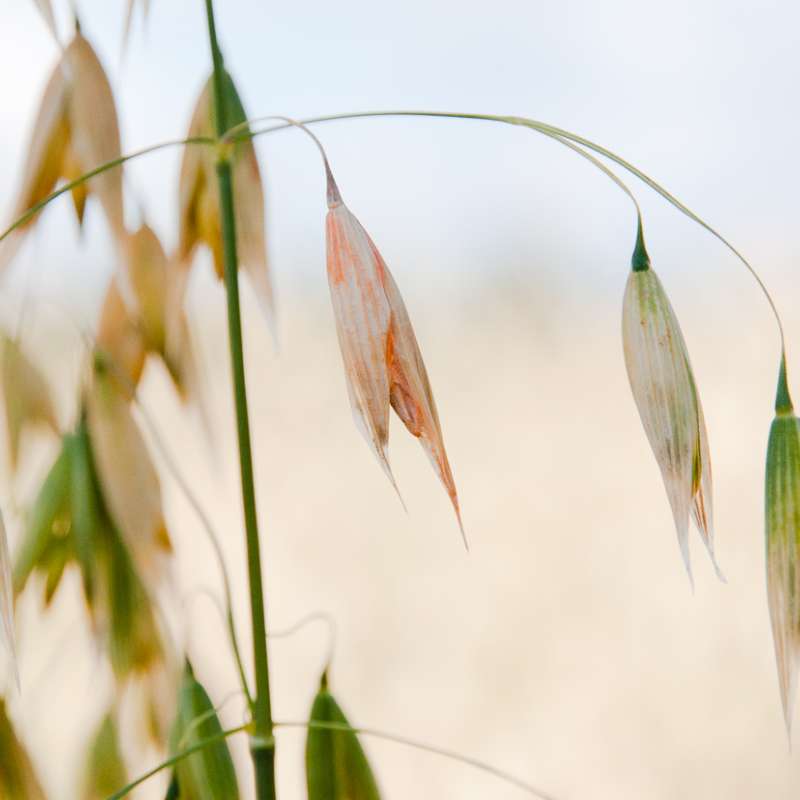Guro Brodal
Seniorforsker (pensjonistavtale)
Forfattere
Heidi Udnes Aamot Magne Nordang Skårn Chloé Grieu Anne-Grete Roer Hjelkrem Katherine Ann Gredvig Nielsen Silje Kvist Simonsen Nora Steinkopf Anne Kjersti Uhlen Guro BrodalSammendrag
Chocolate spot (CS) is one of the most destructive diseases affecting faba beans worldwide, leading to yield reductions of up to 90% in susceptible cultivars under conducive environmental conditions. Traditionally, the disease has been attributed to the fungal pathogens Botrytis fabae and Botrytis cinerea, however recent studies have identified three additional Botrytis species capable of causing the disease. Fungicide applications during flowering are commonly used to control the disease and limit damage to pod set, but this approach is not always effective. The reasons for this lack of control are not fully understood. To increase our understanding of the CS species complex in Norway, we used species-specific PCR to identify different Botrytis species in symptomatic leaves collected at various locations and years. Some Botrytis species are known to be high-risk pathogens for fungicide resistance development, but resistance in Norwegian Botrytis populations in faba bean have not previously been studied. Therefore, we obtained Botrytis isolates from diseased leaves and used a mycelial growth assay to assess their response to the active ingredients (boscalid and pyraclostrobin) in the fungicide commonly used for CS control in Norway. Resistance to both boscalid and pyraclostrobin was detected among B. cinerea isolates, while only resistance to boscalid was detected among B. fabae isolates. To elucidate resistance mechanisms, we analyzed target gene sequences for the presence of mutations known to confer resistance to the two active ingredients. Field experiments were conducted to test the efficacy of various spray timings and fungicides in early and late faba bean varieties. Additionally, we are developing a disease risk model for CS to better understand the conditions that lead to disease and to improve the timing of fungicide applications.
Forfattere
Magne Nordang Skårn Chloé Grieu Anne-Grete Roer Hjelkrem Katherine Ann Gredvig Nielsen Silje Kvist Simonsen Nora Steinkopf Anne Kjersti Uhlen Guro BrodalSammendrag
Chocolate spot (CS) is one of the most destructive diseases affecting faba beans worldwide, leading to yield reductions of up to 90% in susceptible cultivars under conducive environmental conditions. Traditionally, the disease has been attributed to the fungal pathogens Botrytis fabae and Botrytis cinerea, however recent studies have identified three additional Botrytis species capable of causing the disease. Fungicide applications during flowering are commonly used to control the disease and limit damage to pod set, but this approach is not always effective. The reasons for this lack of control are not fully understood. To increase our understanding of the CS species complex in Norway, we used species-specific PCR to identify different Botrytis species in symptomatic leaves collected at various locations and years. Some Botrytis species are known to be high-risk pathogens for fungicide resistance development, but resistance in Norwegian Botrytis populations in faba bean have not previously been studied. Therefore, we obtained Botrytis isolates from diseased leaves and used a mycelial growth assay to assess their response to the active ingredients (boscalid and pyraclostrobin) in the fungicide commonly used for CS control in Norway. Resistance to both boscalid and pyraclostrobin was detected among B. cinerea isolates, while only resistance to boscalid was detected among B. fabae isolates. To elucidate resistance mechanisms, we analyzed target gene sequences for the presence of mutations known to confer resistance to the two active ingredients. Field experiments were conducted to test the efficacy of various spray timings and fungicides in early and late faba bean varieties. Additionally, we are developing a disease risk model for CS to better understand the conditions that lead to disease and to improve the timing of fungicide applications.
Forfattere
Magne Nordang Skårn Chloé Grieu Anne-Grete Roer Hjelkrem Katherine Ann Gredvig Nielsen Silje Kvist Simonsen Nora Steinkopf Anne Kjersti Uhlen Guro BrodalSammendrag
Det er ikke registrert sammendrag

Divisjon for bioteknologi og plantehelse
Mer mangfold i dyrkingsstrategiene for å øke lønnsom produksjon av sunne økologiske korn- og proteinvekster
Mer mangfold og biodiversitet i dyrkingsstrategiene kan være nøkkelen til økt, stabil og lønnsomproduksjon av korn- og proteinvekster i Norge. Flere tiltak har blitt testet for å se på effekten avulike tiltak på jordhelse, erosjon, ugras, plantehelse og avling, men lite er kjent om hvordan enkombinasjon av flere tiltak vil påvirke disse viktige faktorene. Prosjektet ‘Mer mangfold idyrkingsstrategien for å øke lønnsom produksjon av sunne økologisk korn- og proteinvekster’ vilteste og demonstrere effekt av kantvegetasjon, jordarbeiding, fangvekster, variert vekstskifte,sortsblanding og samdyrking på skadedyr, soppsjukdommer og avling i både økologiske ogkonvensjonelle forsøk. En forsøksperiode på 3 år er for kort til å vise langtidseffektene til de uliketiltakene, men vil kunne gi en bedre forståelse for hvilke tiltak som kan kombineres og hvordandisse påvirker plantehelse og produktivitet på kort sikt. Vi ser også for oss at flere forsøksfelt og øktforskningsaktivitet rundt sortsblandinger, samdyrking av ulike vekster, bruk av kantvegetasjon,bruk av proteinvekster i vekstskifte og lønnsomhet kan føre til økt interesse hos gårdbrukere å prøvemer varierte tiltakene i økologisk og konvensjonelt/ regenerativt landbruk.

Divisjon for bioteknologi og plantehelse
Kunnskap om faktorer som påvirker utvikling av sopp og soppgifter
Prosjektet skal identifisere faktorer som påvirker innhold av soppgifter eller andre naturlig dannede uønskede stoffer i planter, og utvikle kunnskap som kan bidra til å redusere forekomsten av slike gifter.
